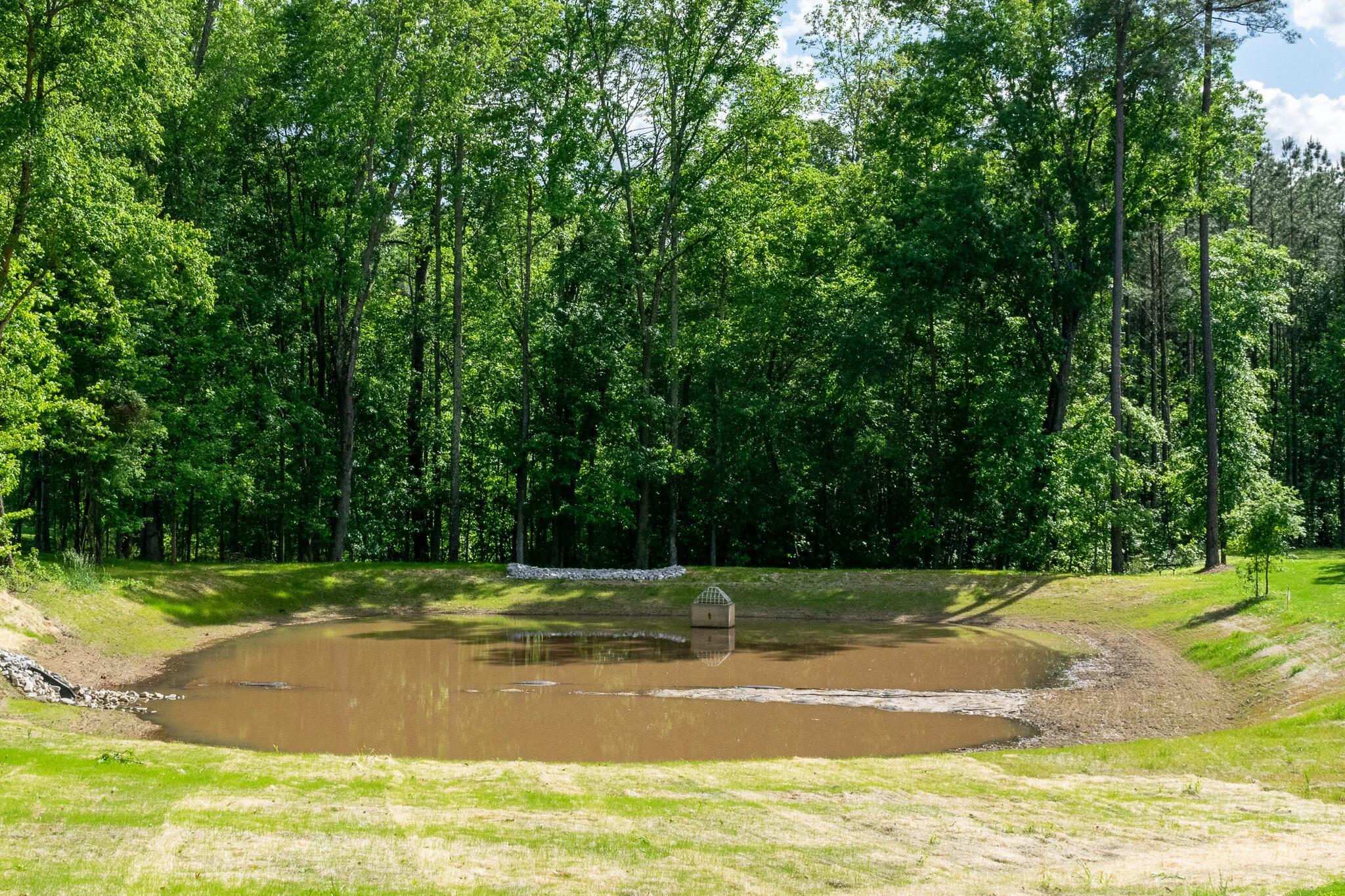Stormwater Conversion: Basin to Stormwater Control Measure
Stormwater Conversion by Dragonfly Pond Works for new Raleigh residential development.
James Wehbie- Regional Manager: Triangle, Charlotte, Charleston
Stormwater Management stormwater conversions are the process of transforming a catch basin into a stormwater control measure. Stormwater ponds start as sediment catch basins during construction. This is a temporary pond intended to capture displaced soil and pollutant runoff during a rain event on a construction site. Once construction of the development is complete, the basin is converted to the stormwater pond. The stormwater pond will effectively manage stormwater runoff for the new residential development.
Dragonfly Pond Works is experienced in this stormwater conversion process, from catch basin to stormwater system. Our specialized experts will ensure the stormwater control measure is built to plan before certification by a professional engineer. Following certification, responsibility of the pond is transferred from the developer to the community. To understand this process better, Team Dragonfly explains our conversion of three basins into stormwater ponds for a new Raleigh residential development.
The above photos are of two of the sediment catch basins in the new development before any conversion work.
Stormwater Conversion Process:
Dragonfly’s stormwater construction experts started by clearing and excavating sediment from the basin of the ponds. In just one of the ponds alone, 225 truckloads of sediment and excess dirt were removed. The entire pond was then graded to meet the design plans of the professional engineer.
Next, the forebay berms in each system were completed and stabilized. The berm separates the sediment forebay where the stormwater runoff enters the system from the rest of the pond. This slows the incoming runoff and helps settle out sediment.
Fabric and riprap, or stones, were installed at inlets, outlets, berms, and spillways of all three systems as part of the stormwater conversion. This practice helps safeguard from erosion, slow the incoming runoff, and increases pollutant filtration.
Dragonfly’s stormwater specialists then stabilized disturbed areas with matting, straw, and seed. Grass will take root and grow in these areas. Additionally, wetland seed mix was spread around the aquatic shelf of all three ponds. Dragonfly applies wetland seed mix and/or aquatic plants to provide plant diversity, increase water quality, and to create a buffer around the perimeter.
Pipes were assessed for any issues. In one of the stormwater control devices, there was a large gap in a pipe. Hydraulic cement was utilized to seal the gap. Risers were also assessed and repaired where necessary to ensure they were sealed and at the correct elevation.
One of the sediment catch basins before the stormwater conversion.
The same sediment catch basin after conversion to a stormwater pond. This photo was taken following a rain event.
Another one of the sediment catch basins before the stormwater conversion.
The same catch basin after the conversion to stormwater pond.
Dragonfly’s stormwater construction and repair specialists have completed the stormwater conversion of the three sediment basins into stormwater ponds. The stormwater control measures have been certified by a professional engineer and will be subject to annual inspections moving forward. Specialized stormwater maintenance will help keep the system functioning as designed and compliant with local regulations. Our stormwater maintenance crews keep clients informed with detailed reports following every service. Please contact us to learn more about our stormwater management services.
Stormwater Control Measures and More!
Water quality issues? Learn about the causes of muddy, or turbid, water and one of our innovative solutions. Our stormwater experts provide their top Bioretention Maintenance tips to keep your system healthy and compliant.
Subscribe to our newsletter to receive informative and engaging news delivered right to your inbox.
Dragonfly Pond Works is a lake, pond, and stormwater management company. We provide stormwater conversions, specialized stormwater maintenance, and more throughout North Carolina in Raleigh, Durham, Charlotte, Cary, and Wilmington. Our pond and lake maintenance services, shoreline restoration, and more can be found throughout Florida, in Tampa, St. Petersburg, Naples, Sarasota, Fort Myers, and Orlando. We also provide lake and pond maintenance in Myrtle Beach, Charleston, Columbia, South Carolina, and Atlanta, Georgia. We strive to develop long-term relationships based on quality work, timely service, cost-efficiency, and of course, trust.
Find us on Facebook, Twitter, Instagram, and LinkedIn for news, events, and more!















